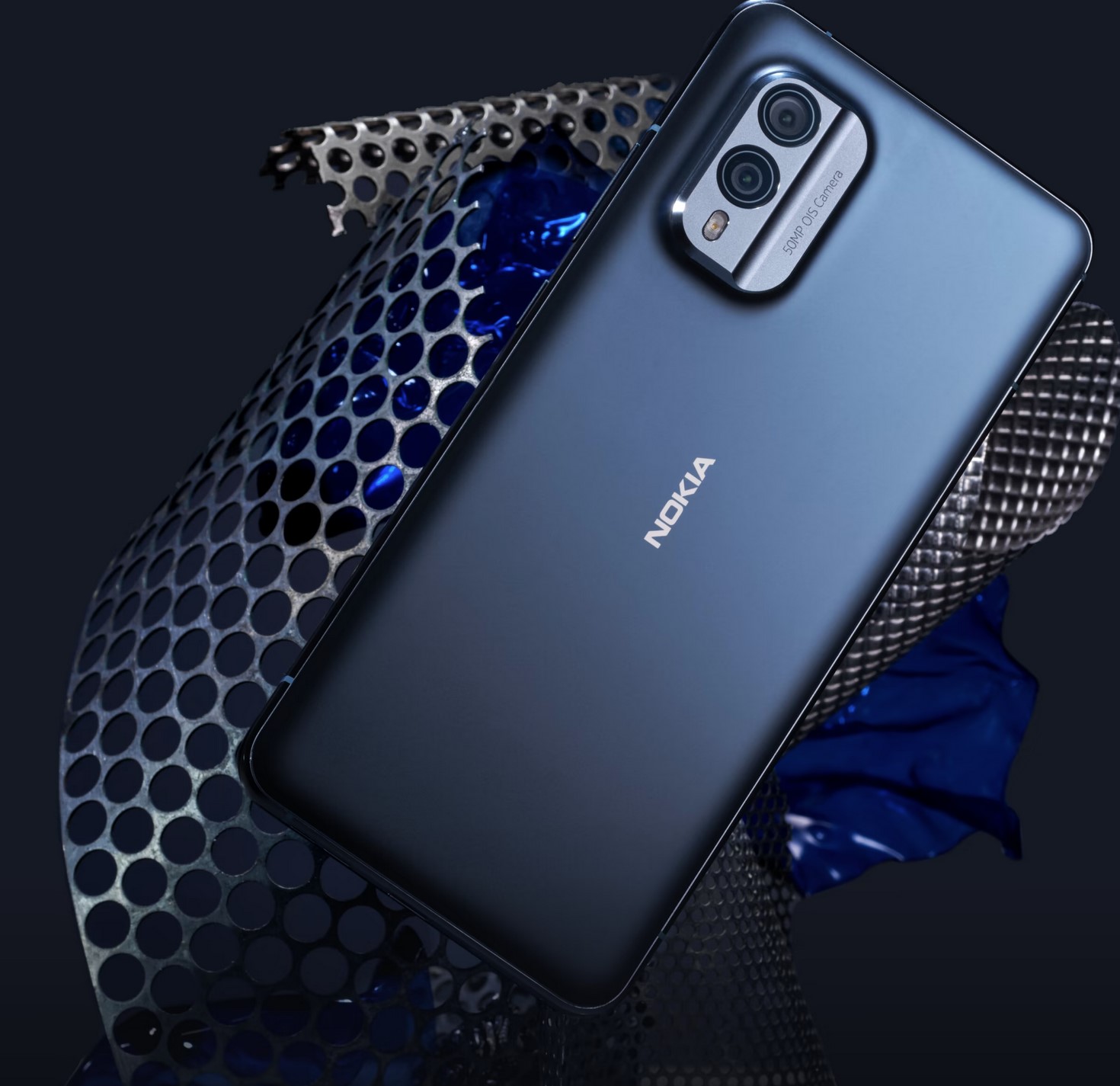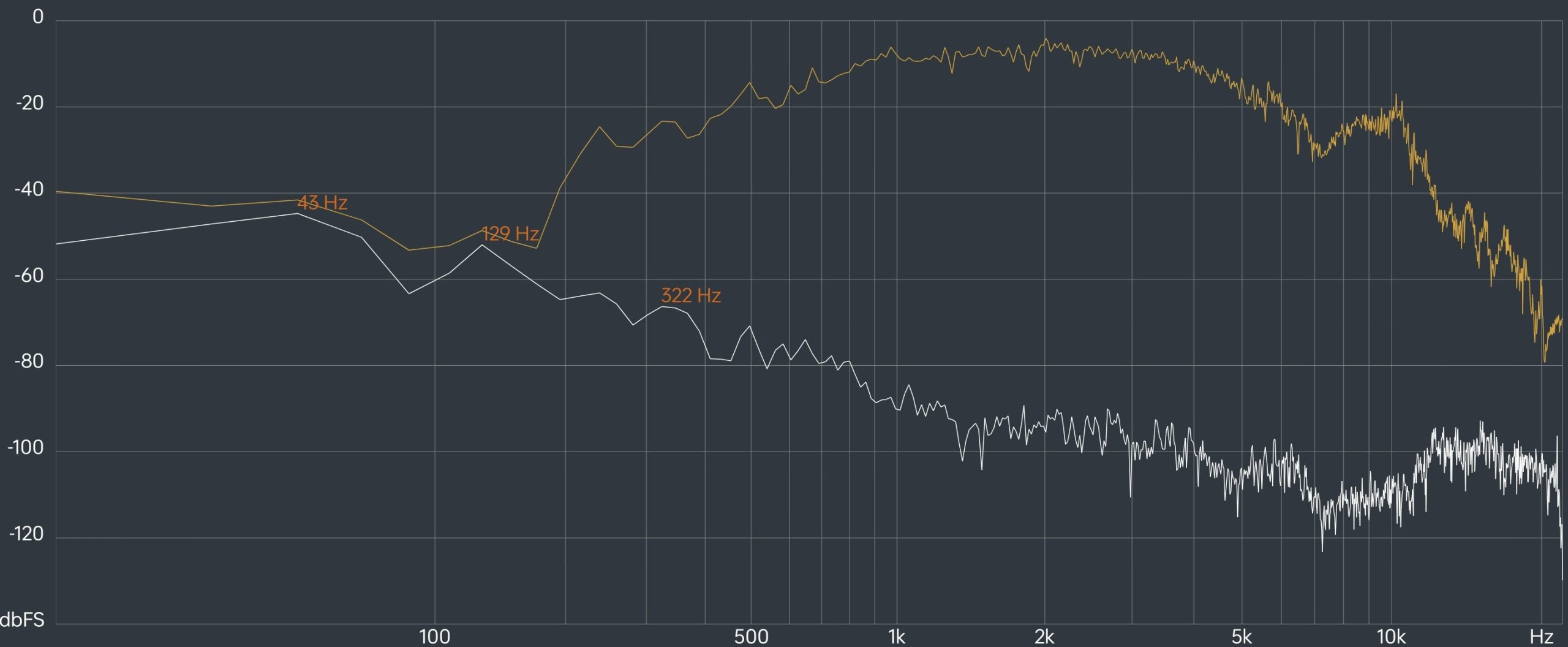Nokia X30 5G – interesting pure Android smartphone (review)

The Nokia X30 5G is an interesting pure Android smartphone from Finland-based HMD Global. There is a lot to like, but you need to know what you are getting from this upper-mid-range priced device.
I am desperately trying to find a clever headline for the Nokia X30 5G, but I can’t. I keep coming up with solid, average, and outclassed … it is an all-right phone in every way. My greatest apologies to Nokia, as I want it to succeed, if only for ‘old time’s sake’.
Let’s explain what you are getting with the Nokia X30 5G
- Qualcomm SD695 5G System on a Chip (a step or two below competitor’s SoCs)
- 8/256GB RAM/Storage (slightly above competitors)
- 6.43” 2400 x 1080, 60/90Hz AMOLED (smaller than competitors)
- Pure Android and 3+3+3 warranty/OS upgrades/Security patches. (Better than competitors)
- 4200mAh battery and no charger (worse than competitors)
- Mono speaker (worse than competitors)
- 50+13MP rear camera and 16MP Front Camera (some competitors offer tri-cameras)
- Eco-friendly construction (all competitors offer this to some degree)
So don’t write the Nokia X30 5G off – just remember that specifications are not everything. It is a good all-rounder and worthy of consideration, but in the end, its price may not equate with your expectations of value.
What is Nokia Mobile these days?
In the late 90s, Nokia was the largest global smartphone designer and manufacturer. Then came smartphones, and it is Windows Phone handsets led the way. In 2007 Steve Jobs’s Apple iPhone started to gain traction, and this new trendy device decimated Nokia’s Window Phone sales. Windows Mobile was a vastly superior operating system to Apple’s iOS, but Apple had the App developers’ attention and, as a result, thousands more Apps.
In 2014 Microsoft bought the company, and its wildly polarising CEO, Steve Blamer, put the final nail in the coffin of this great, iconic brand.
In 2016 HMD Global in Espoo, Finland, bought the brand. Many ex-Nokia executives run it, and its shareholders include Nokia Networks, Google, Microsoft, and Qualcomm. Its smartphones use Pure Android One, and its feature phones use Firefox OS-derived KaiOS. Its handsets are made by Foxconn’s Chinese factories (Foxconn also make Apple iPhone).
During the COVID-pandemic, Nokia handsets languished mainly because of supply chain issues, and OPPO and Motorola out-classed them. It is popular in the UK, where it is neck with #2 OPPO with about 4% of the market. HMD Global claims it is back in the top five smartphone makers (Apple, Samsung, OPPO/BBK, Google, Motorola) in 23 countries.
Note that Nokia Mobile is not Nokia Networks, also Finland-based.
Australian Review: Nokia X30 5G Model TA-1450 DS 8/256
| Website AU | Product Page |
| Price | 8/128GB $799 (JB Hi-Fi only) 8/256GB $899 |
| From | Nokia Online, Harvey Norman, JB Hi-Fi, Officeworks |
| Warranty | 3-years ACL |
| Made in | China |
| Company | See above |
| More | CyberShack Nokia news and reviews Note that Nokia did not participate in CyberShack’s review program until 2023. |
Deep-Dive review format
It is now in two parts – a summary and a separate 300+ line database-driven spec, including over 70 tests to back up the findings. It also helps us compare different phones and features.
We use Fail (below expectations), Passable (meets low expectations), Pass (meets expectations), Pass+ (near Exceed but not class-leading) and Exceed (surpasses expectations or is the class leader) against many of the items below. You can click on most images for an enlargement.
Warning – Grey Market
When researching this device, we discovered that there is quite a large grey market for it. If you plan to use 5G, Wi-Fi calling, and VoLTE, don’t buy grey market as these cannot access Australian 5G networks. You will find the letters ANZO on a genuine box label.
Read Don’t buy a grey market phone (guide)
First Impression – well made – Pass
It is not a flagship – more a mid-range with some benefits. It looks good with a slim 20:9 flat screen with largish bezels, Gorilla Glass Victus screen protection, recycled aluminium frame, and recycled plastic back – the Finland equivalent of a Volvo – boring but lasting. Its closest competitors are the 2022 Samsung A53 5G or Motorola Edge 30 Neo 5G.
It has a minimalist 2-sensor camera assembly on the back and the usual power/volume up/down on the right. There is an overly prominent O-hole selfie with a ring around it that is overly obvious.
Screen – Pass+
6.43” AMOLED, 8-bit/16.7m colour, 2400 x 1800, 409ppi with 60Hz or 60/90Hz adaptive refresh.
Overall, this is a decent, if slightly smaller, screen with 400 nits typical and up to 700 nits peak (in a small portion of the screen) brightness. It is OK if you avoid direct sunlight.
While it is reasonably bright, it does have a distinct cold blue tint (you can adjust the colour temperature from cold to warm) and a high Delta E. It uses Pulse Width Modulation at approx. 90Hz for dimming, and this may cause eye strain for prolonged use.
It has an L1 Widevine rating for up to FHD SDR video streaming.
Summary: Fit for purpose
Processor – Qualcomm SD695 – Pass
While a decent SoC, it is outclassed by competitors that offer SD7XX, SD8XX and Exynos/Tensor SoCs. Again, look past the specs because it never lagged or stuttered in four weeks of use – except for games.
Geekbench single/multi-core score is 673/1941 (same SoC as the Motorola Edge 30 Neo).
GPU – Adreno 619 – Pass
Open CL is 1384, and Vulcan is 1186 – not enough for games above 30fps.
Storage – 256GB UFS 2.2 – Pass
Competitors use faster UFS 3.1 storage and Nokia UFS 2.2, reflected in the slower disk speed tests. There is no microSD expansion, but the 256GB more than makes up for that.
Test
- CPDT sequential read/write: 500/373MBps
- CPDT external SSD read/write: Does not support external SSD/Flash mountable drivers. ‘Files’ finds Flash drives (tested 64GB – would not work on 256GB).
Throttle – Pass+
It has 5% throttling in a 15-minute stress test (as expected with an SD695 SoC) – negligible in everyday use.
- Maximum GIPS (Billion instructions per second) 179,092
- Average 174,793
- Minimum 165,122
- SoC temp 50°
Comms – Pass
The website says Wi-Fi 6 AX ‘ready’. We are a little disappointed that our test software shows it currently supports Wi-Fi 5 AC 5GHz band to a maximum of 433Mbps when it should be 1200-2400. We expect an OS Upgrade to Android 13 should enable Wi-Fi 6.
It has Bluetooth 5.1, Dual GPS, NFC, and USB-C 2.0 480Mbps (no alt DP audio/video out).
Test
- 2m 5Ghz: -26dBm/433Mbps
- 5m: -46/433
- 10m: -51/433
- 15m 2.4GHz: -60/72 (unusable and swapped to 2.4GHz band)
This, plus the results of the LTE/5G test, show that its antenna signal strength is not as good as some of its competitors.
LTE/5G – Pass
It finds the three nearest Telco towers (out of four) but at lower, still usable, signal strengths ranging from 125fW to 2pW.
This means it is suitable where you have good signal strength but not for rural and regional areas with low signal strength.
Battery – 4200mAh but no charger – Pass/Fail
We cannot countenance the absence of a charger as Samsung, Google, and now Nokia charges an extra $39.95 for the charger. The USB-C to USB-C cable supplied is rated 2W – you need a 3W or higher rating to charge at 33W.
We understand (as we do not have one) that the charger is PD compatible – 5V/3A/15W, 9V/3A/27W, 11V/3A/33, 12V/2.5A/30W, 15V/2A/30W, and 20V/1.65A/33W MAX.
Our charging with a Google Pixel 30W PD 20V/1.5A/30W, 15V2A/30W, 5V/3A/15W and 9V/3A/27W; PPS 21V⎓1.5A. 11V⎓3A charger tended to sit at 10W. With a 100W ChargeASAP GaN charger, it never exceeded 20W.
We suspect that only the Nokia charger with 11V/3A/33W fixed voltage will charge at full rate. So, take charge times as approximate.
Battery Tests (Pixel 7/Pro) all in 60Hz and 1080p res
- 1080p video loop 50% brightness/sound/aeroplane mode: 24 hours
- PC Mark: 13 hours and 1 minute
- Accubattery:
- GFX Bench Manhattan: Would not run
- GFX Bench T-Rex (games, heavy use): 388.9 minutes (6.48 hours) 4425 frames
- 30W Charge 0-100%: 1hr 6 minutes.
- 5V/2A/10W charge 0-100%: 3 hours 55 minutes.
- Discharge 100% – 100-0%:
- mA discharge screen on, idle:
- mA discharge screen on, 100% load:
Summary: You should get two days of typical use.
Sound – Mono – Passable
It has one amplifier that powers the earpiece in phone mode and a bottom-firing mono speaker in hands-free and music mode.
It is relatively loud at 85dB and has decent hands-free volume and noise cancelling from the dual OZO mics. There is no sound stage, and the sound signature mid for clear voice. Music is not recommended as it has no bass and very little treble.
An $899 device should have stereo speakers.

Build – Exceed
- Cover glass: Scratch-resistant Corning Gorilla Glass Victus.
- Rear: Recycled plastic.
- Frame: recycled aluminium frame.
- IP67 1m for 30 min.
It is well made, and with the 3-year warranty, it is a keeper.
Pure Android 12 – where is 13? – Pass+
While the security patch is February 2023 (up to date), where is Android 13? Most manufacturers have rolled it out. But you can be sure you will get it – whenever. We suspect that will enable Wi-Fi 6 as well.
Pure Android One means that there is no operator embellishment, although it has some bloatware that Nokia receives payment for pre-loading.
| Android | Google Android 12, Security patch 02/23 |
| UI | None |
| All standard apps, Google Lens. Maps, Assistant and YouTube. Google Assistant by pressing the power key | |
| Bloatware | LinkedIn Spotify Express VPN GoPro Quik Amazon Shopping Amazon Music |
| Update Policy | Three Android OS upgrades Three years of security patches from the date of launch |
| Security | Optical under-glass Fingerprint reader – 6/10 – more touchy than expected. |
Missing – No deal breakers
| 3.5 mm | No 3.5mm nor a USB-C to 3.5mm DAC adapter |
| MicroSD | No really an issue |
| USB | A lost opportunity to implement USB-C 3.1 Gen 2 with ALT DP for USB-C/HDMI cable screen mirror |
| External Storage | It is a concern that you cannot mount an external SSD or larger flash storage to direct record video and large files. |
| Sound | EQ |
| Charger | Especially as 33W charging only appears to work with the Nokia charger! |
Camera – Nokia X30
We know the Samsung GN5 50MP bins to 12.5MP and the Omnivision 13MP ultra-wide sensors very well. We also have a good idea of the AI post-processing power in the Qualcomm SD695. As far as we are concerned, the Nokia X30 lives up to our expectations.
On the whole it produces decent day and office light and surprisingly good low-light shots.
- Dynamic range is a little limited
- Images have a slight yellow/green cast
- Details are good
- 50MP doubles as Macro
- Ultra-wide uses 50MP sensor to reinforce details
- ‘Night mode’, ‘Dark Vision’, and ‘Tripod mode’, with an extra ‘Auto’










CyberShack’s view – Nokia X30 5G – interesting pure Android smartphone
We had all but given up on Nokia. Nice gear but the tech and specs (perhaps due to COVID supply problems in 20-21) put it well behind the other brands. It was as if the phones remained in stasis for a year or so.
The Nokia X30 is a move back to redemption, but at $899, it does not offer typical mid-range value. It has an average camera, mono speaker, lower-powered Qualcomm SD695 5G SoC and no charger.
On the bright side are a 3-year warranty, three OS upgrades and three years of security patches. Perhaps we can overlook the price and its foibles?
Would I buy the Nokia X30?
Yes and no. I can’t fault it for Joe and Jane Average, who don’t really care whether it is the best, fastest etc. It is well made and has excellent warranty/OS support. Hey, I owed a Volvo once and loved it!
No, because the Motorola Edge 30 Fusion for the same price blows it out of the water: 10-bit/144Hz AMOLED, blazingly fast SD888+ SoC, 8/128GB (Nokia has 8/256), USB-C 3.1 alt DP port (USB-C 2.0), 68W/37-minute charger (no), stereo speakers (mono) and a better camera. Sure, it has two years warranty/OS upgrade/security.
I think this is more competitive with the Motorola Edge 30 Neo, Samsung A53 or OPPO Reno 8 Lite with the same processor at $599.
Competition (All 5G)
- Motorola Edge 30 Fusion 128GB (Magenta and Solar Gold) $899
- Samsung A73 128GB $799
- Google Pixel 7 128GB $999/799 on sale
- Google Pixel 6a 128GB $749 and 256GB 1129/929
- OPPO Reno 8 256GB $877/699
- Best Android phones 2022 – $200 to $2000 (guide January 2023 update)
Rating Explanation
This is a conundrum because you can get most of the features in a $599 phone. We will ignore price except for the value segment.
- Features: 80 – loses points for no charger but has everything else you expect
- Value: 70 – Price is not commensurate with other competitors, but then you pay more for a Volvo than a Hyundai!
- Performance: 85 – the SD695 SoC is fine but a step or two below competitors’ offerings
- Ease of Use: 95 – 3+3+3 and Pure Android.
- Design: 85 Another glass slab, but Gorilla Glass Victus and IP67 give it extra cred.
Nokia X30, Nokia X30, Nokia X30, Nokia X30, Nokia X30, Nokia X30,
CyberShack Smartphone comparison v 1/2023 (E&OE)
Nokia X30 5G
| Brand | Nokia |
| Model | X30 5G |
| Model Number | TA-1459 DS 8/256 |
| Price Base | 8/256 |
| Price base | $799 8/128GB JB Hi-Fi only $899 8/256 Retail version |
| Warranty | 3-years |
| Tier | Mid-range processor |
| Website | AU Here |
| From | JB Hi-Fi, Officeworks, Harvey Norman, Telstra |
| Country of Origin | China |
| Company | Nokia is a smartphone brand owned by HMD Global in Espoo, Finland. Many ex-Nokia executives run it. Microsoft previously held the brand from 2014 to make Windows Mobile handsets. The G and X series are the sixth generation under HMD and represent a new naming convention. |
| Test date | 1-15 February 2023 |
| Ambient temp | 25° |
| Release | Sep-22 |
| Other models not for Australia (Don’t buy) | Nokia brand is often grey-marketed. We repeat the warning that you must buy the genuine Australian firmware model if you want to use 5G, VoWi-Fi and Wi-Fi calling. |
Screen
| Size | 6.43″ |
| Type | AMOLED |
| Flat, Curve, 2D, 3D | Flat |
| Resolution | 2400 x 1080 |
| PPI | 409 |
| Ratio | 20:09 |
| Screen to Body % | 85% |
| Colours bits | 8-bit/16.7m |
| Refresh Hz, adaptive | 60Hz or 60/90Hz step adaptive |
| Response 120Hz | N/A |
| Nits typical, test | 400 (tested 430) |
| Nits max, test | 700 (tested 715) |
| Contrast | Infinite OLED |
| sRGB | 130%+ |
| DCI-P3 | 90% of 16.7m colours |
| Rec.2020 or other | N/A |
| Delta E (<4 is excellent) | 4.68 |
| HDR Level | HDR capable |
| SDR Upscale | No |
| Blue Light Control | Yes |
| PWM if known | Yes, 90Hz and may cause eye strain for prolonged use |
| Daylight readable | Yes, but avoid direct sunlight |
| Always on Display | Yes |
| Edge display | No |
| Accessibility | Yes – all Android features |
| DRM | Widevine L1 but only managed FHD/SDR streaming |
| Gaming | No recommended despite 2ms GTG, and 90Hz screen frame rates are 30fps at best |
| Screen protection | Gorilla Glass Victus |
| Comment | Only a colour temperature slider – no real adjustment |
Processor
| Brand, Model | Qualcomm SD695 5G Website |
| nm | 6 |
| Cores | 2×2.2GHz and 6×1.7GHz |
| Modem | X51 |
| AI TOPS | Estimate <10 |
| Geekbench 5 Single-core | 673 |
| Geekbench 5 multi-core | 1941 |
| Like | Similar to Motorola Edge 30 Neo |
| GPU | Adreno 819 840MHz |
| GPU Test | |
| Open CL | 1389 |
| Vulcan | 1186 |
| RAM, type | 8GB LPDDR4X |
| Storage, free, type | 256GB UFS 2.2 (not the latest 3.1) 217GB Free |
| micro-SD | No |
| CPDT internal seq. Read MBps | 500 |
| CPDT internal seq. write MBps | 373 |
| CPDT microSD read, write MBps | N/A |
| CPDT external (mountable?) MBps | It will not support mountable external SSD or Flash. ‘File’ recognises 64GB flash but not 256GB Flash. |
| Comment | Disk speed tests reflect slower UFS 2.2. Some competitors offer UFS 3.1 and mountable SSD storage. |
| Throttle test | |
| Max GIPS | 186,118 |
| Average GIPS | 183,512 |
| Minimum GIPS | 176,067 |
| % Throttle | 5% |
| CPU Temp | 50 |
| Comment | Overall the SoC Is fit for purpose but one or two steps below competitors. |
Comms
| Wi-Fi Type, model | Wi-Fi 6 (would only connect at Wi-Fi 5 AC 5GHz). |
| Test 2m -dBm, Mbps | -26/433 |
| Test 5m | -46/433 |
| Test 10m | -51/433 (10m – -60/72 on 2.4GHz band) |
| BT Type | 5.1 |
| GPS single, dual | Dual |
| USB type | USB-C 2.0 ITG (no audio/video alt DP) |
| ALT DP, DeX, Ready For | No |
| NFC | Yes |
| Ultra-wideband | No |
| Sensors | |
| Accelerometer | Yes – combo with Gyro |
| Gyro | Yes – combo with Gyro |
| e-Compass | Yes |
| Barometer | |
| Gravity | |
| Pedometer | |
| Ambient light | Yes |
| Hall sensor | |
| Proximity | Yes |
| Other | |
| Comment | This, plus the results of the LTE/5G test, show that its antenna signal strength is not as good as some of its competitors. Limited sensors make auto-rotation touchy. |
LTE and 5G
| SIM | Dual |
| Active | One at a time, DS standby |
| Ring tone single, dual | Dual ring tones – good |
| VoLTE | Carrier dependent |
| Wi-Fi calling | Carrier dependent |
| 4G Bands | 1, 2, 3, 4, 5, 7, 8, 12/17, 20, 28, 32, 38, 39, 40, 41 |
| Comment | All Australian 4G bands |
| 5G sub-6Ghz | n1, n3, n5, n7, n8, n28, n38, n40, n41, n77, n78; |
| Comment | All Australian 5G and low bands |
| mmWave | No |
| Test Boost Mobile, Telstra | |
| UL, DL, ms | 27.2/20/31ms (average) |
| Tower 1 -dBm, fW or pW | -87/2 picowatts (reasonably solid) |
| Tower 2 | -93/500-700 femtowatts |
| Tower 3 | -96/100-200fW |
| Tower 4 | No |
| Comment | Suitable for major and regional cities and suburbs where tower coverage is good. |
Battery
| mAh | 4200 |
| Charger, type, supplied | Claims 33W fast charge Not supplied Quotes 800 charging cycles life Up to 2 days battery life |
| PD, QC level | PC 3.0, PPS and QC 3.0 |
| Qi, wattage | N/A |
| Reverse Qi or cable | N/A |
| Test (60Hz or adaptive screen) | |
| Charge % 30mins | 60% |
| Charge 0-100% | 66 minutes (using Pixel 30W adapter) |
| Charge Qi, W | N/A |
| Charge 5V, 2A | 3 hours 55 minutes |
| Video loop 50%, aeroplane | 24 hours |
| PC Mark 3 battery | 13 hours 1 minute Accubattery 15 hours 28 minutes |
| GFX Bench Manhattan battery | Would not run |
| GFX Bench T-Rex | 388.9 minutes (6.48 hours), 4425 frames |
| Drain 100-0% full load screen on | 4 hours 40 minutes Accubattey 4 hours 18 minutes |
| mA full load | 1350-1450 |
| mA Watt idle Screen on | 250-300 |
| Estimate loss at max refresh | 10% |
| Estimate typical use | You should get two days of typical use. |
| Comment | USB-C cable supplied only capable of 2W charging. To achieve 33W, you need a 5W cable. The battery tends to charge at 15W regardless of the charger (four tested). |
Sound
| Speakers | Mono-earpiece and down-firing speaker |
| Tuning | No |
| AMP | AW881 |
| Dolby Atmos decode | No |
| Hi-Res | No |
| 3.5mm | No |
| BT Codecs | SBC, AAC, aptX HD, aptX Classic, aptX Adaptive |
| Multipoint | Should be |
| Dolby Atmos (DA) | No |
| EQ | No |
| Mics | 2 x OZO Spatial Audio capture with wind noise reduction |
| Test dB – all on EQ flat DA off | |
| Volume max | 85 |
| Media (music) | 78 |
| Ring | 85 |
| Alarm | 80 |
| Notifications | 85 |
| Earpiece | 55 |
| Hands-free | Decent volume and some noise cancellation |
| BT headphones | Good left/right separation and volume. |
Sound quality
| Deep Bass 20-40Hz | No |
| Middle Bass 40-100Hz | No |
| High Bass 100-200Hz | No |
| Low Mid 200-400Hz | Building to 1000Hz |
| Mid 4000-1000Hz | Building to 1000Hz |
| High-Mid 1-2kHz | Flat |
| Low Treble 2-4kHz | Flat |
| Mid Treble 4-6kHz | Dip and then recovery |
| High Treble 6-10kHz | Decline to 20kHz |
| Dog Whistle 10-20kHz | Decline to 20kHz |
| Sound Signature type | Clear voice only – music is thin and hollow. |
| Soundstage | None – it is mono |
| Comment | Suitable for voice but not for music |
Build
| Size (H X W x D) | 158.9 x 73.9 x 7.88mm |
| Weight grams | 185g |
| Front glass | Gorilla Glass Victus |
| Rear material | Recycled plastic |
| Frame | Recycled aluminium |
| IP rating | 67 |
| Colours | Cloudy Blue Ice White |
| Pen, Stylus support | No |
| In the box | |
| Charger | No |
| USB cable | USB-C- to USB-C 3W |
| Buds | No |
| Bumper cover | No |
| Comment | No charger is a negative, especially as it needs 10V/3W/33A charging. |
OS
| Android | 12 |
| Security patch date | 02/2023 |
| UI | None |
| OS upgrade policy | 3 OS Upgrades |
| Security patch policy | Three years of monthly security patches |
| Bloatware | LinkedIn Spotify Express VPN GoPro Quik Amazon Shopping Amazon Music |
| Other | Upgraded camera app |
| Comment | Pure Android and three OS/years updates are among the best. Does try to get you to sign up for HMD Account. |
| Security | |
| Fingerprint sensor location, type | Under glass – 6/10 reliability |
| Face ID | Face ID 2D uses IR for extra reliability at night |
Camera – Nokia X30
| Rear Primary | Wide |
| MP | 50MP binned to 12.5MP |
| Sensor | Samsung GN5 |
| Focus | PDAF |
| f-stop | f/1.9 |
| um | 1 bins to 2 |
| FOV° (stated, actual) | 72.5-81.1° |
| Stabilisation | OIS |
| Zoom | 8X digital |
| Rear 2 | Ultra-wide |
| MP | 13 |
| Sensor | Omnivision OVB13B10 |
| Focus | Fixed |
| f-stop | f/2.4 |
| um | 1.12 |
| FOV | 123° |
| Stabilisation | No |
| Zoom | No |
| Special | Camera App is upgraded from standard Android. Ultra-wide uses ‘Capture Fusion’ – images from the main and ultra-wide-angle cameras are combined for more centre detail. |
| Video max | 1080p@60fps OIS OIS/EIS to 30fps |
| Flash | Yes |
| Auto-HDR | Yes |
| Capture Fusion for UW, Night Mode 2.0, Dark Vision, Tripod Mode, Night Selfie, AI Portrait | |
| QR code reader | Google Lens |
| Night Mode | Yes. Night Mode 2.0, Tripod Mode and Dark Vision. |
Front
| Selfie | |
| MP | 16MP bins to 4.3MP by default |
| Sensor | Omnivision OV16A1 |
| Focus | Fixed |
| f-stop | f/2.45 |
| um | 1 bins to 2 |
| FOV (stated, actual) | 72.5-85.2° |
| Stabilisation | No |
| Flash | Screen fill |
| Zoom | No |
| Video max | 1080p@30fps |
| Comment | Saturation is good but not true colours. Slight yellow/green cast Detail good Doubles as Macro ‘Night mode’, ‘Dark Vision’, and ‘Tripod mode’, with an extra ‘Auto’ No selfie HDR · 1X Day Primary sensor: Dynamic range is limited – a little flat! Limited details in the foreground, shadows, and highlights. · 2X Primary sensor: Good detail and much better dynamic range due to AI post-processing · 4X Day Primary sensor: Good colour and details – the background is showing with little noise · 8X Day: Primary sensor: Good foreground detail but pushing its limits with a noisy background · Ultra-wide: 13MP sensor: You can tell it is a different sensor from the primary as it has better colour saturation. · Indoor office light: Good colours, details and sharpness but lacking dynamic range. · Bokeh Depth: Excellent foreground colour, detail, dynamic range, and sharpness and bokeh background. · Dark <40 lumens: The standard mode (not night mode is a good shot. · Night mode: Adds a little colour and sharpens the image. · Selfie: The 16MP (bins to 4MP) has natural skin tones, good detail and a range of filters to enhance any image. · Video (we are not video experts): · Primary sensor: You can shoot at 1080p@60fps (OIS), and 1080p@30fps (OIS/EIS) and the day/office light results are very good. Adequate for low-light video. Selfie: 1080p@30fps no OIS or EIS. Decent video conference camera. |
Ratings
| Features | 8 |
| It loses points for no charger but has everything else you expect. | |
| Value | 7 |
| Price is not commensurate with other competitors, but you pay more for a Volvo than a Hyundai! | |
| Performance | 8.5 |
| The SD695 SoC is fine but a step or two below competitors’ offerings. | |
| Ease of Use | 9.5 |
| 3+3+3 and Pure Android. | |
| Design | 8.5 |
| Another glass slab, but Gorilla Glass Victus and IP67 give it extra cred. | |
| Rating out of 10 | 8.3 |
| Final comment | If you ignore the price and accept that you pay more for the Volvo of the smartphone world, it is a decent handset. |
| Pro | |
| 1 | Decent AMOLED screen and Gorilla Glass Victus |
| 2 | Pure Android One, three years/warranty/OS/security patches |
| 3 | Good battery life and charging speed. |
| 4 | Well built |
| 5 | Decent camera |
| Con | |
| 1 | No charger |
| 2 | Mono speaker |
| 3 | SD695 is not really in this class/price |
| 4 | There are more cost-competitive alternatives |
| 5 |
Nokia X30 5G Model TA-1450 DS 8/256
$899Pros
- Decent AMOLED screen and Gorilla Glass Victus
- Pure Android One, three years/warranty/OS/security patches
- Good battery life and charging speed.
- Well built
- Decent camera
Cons
- No charger in box - more cost
- Mono speaker
- SD695 is not really in this class/price
- There are more cost-competitive alternatives










